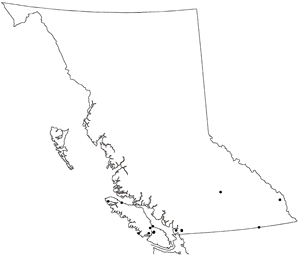This is an introduced European species of earthworm. Reynolds (1977) provides the following description for it: “Length 25-130 mm, diameter 3-6 mm, segment number 75-150, prostomium epliobic, first dorsal pore 9/10-13/14, usually 11/12. Clitellum xxx-xxxv. Tubercula pubertatis xxxi-xxxiv. Setal pairings as in Octolasion cyaneum. Frequently setae a and/or b on xxii and occasionally on ix-xii, xiv, xvii, xix-xxiii, xxvii, xxxvii, or xxxviii are on gential tumescences and modified into gential setae. Male pores on xv and on large glandular papillae extending over xiv and xvi, occasionally limited to xv. Seminal vesicles, four pairs in 9-12, with pairs in 11 and 12 larger than pairs in 9 and 10. Spermathecae, two pairs opening on level C or between c and d in 9/10 and 10/11. Body cylindrical but slightly octagonal posteriorly. Colour variable, milky white, grey, blue, or pink.”
Source: Reynolds, John W. 1977. The Earthworms (Lumbricidae and Sparganophilidae) of Ontario. Life Science Miscellaneous Publications, Royal Ontario Musuem, Toronto, with permission.
Octolasion tyrtaeum (Savigny, 1826)
Earthworm; Woodland White Worm
Family: Lumbricidae
Earthworm; Woodland White Worm
Family: Lumbricidae
Map

Distribution of Octolasion tyrtaeum in British Columbia.
(Click on the map to view a larger version.)
Source: Marshall and Fender (2007)
Introduction
|
Illustration
Click on the image(s) below to view an expanded illustration for this taxon.

Illustration Source: Reynolds, John W. 1977. The Earthworms (Lumbricidae and Sparganophilidae) of Ontario. Life Science Miscellaneous Publications, Royal Ontario Museum, Toronto.
Species Information
Biology
|
Habitat
|
Distribution
|
Status Information
BC Ministry of Environment: BC Species and Ecosystems Explorer--the authoritative source for conservation information in British Columbia. |